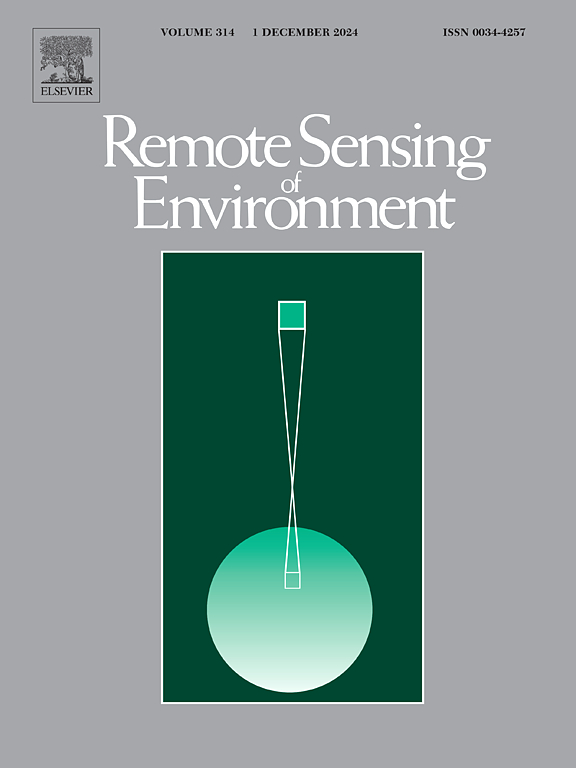Using regional characteristics to improve uncalibrated estimation of rootzone soil moisture from optical/thermal remote-sensing
Sahaar, Shukran A , Niemann, Jeffrey D , Elhaddad, Aymn
2022-05-01 null null 273(卷), null(期), (null页)
Remote-sensing methods based on optical and thermal satellite imagery have been proposed to estimate fine-resolution (30 m) rootzone soil moisture (theta) over bar. In these methods (theta) over bar. is most commonly estimated using a single empirical relationship with evaporative fraction Lambda(SEB) or evaporative index Lambda(PET). Methods have been proposed recently to estimate these relationships based on regional climate, soil, and vegetation characteristics, but those methods have not yet been applied to estimate (theta) over bar from remote sensing data. The objective of this study is to evaluate the. estimates from remote sensing when the Lambda(SEB) vs. (theta) over bar and Lambda(PET) vs. (theta) over bar relationships are inferred from regional characteristics using the previously proposed methods. Four study regions are considered including the Walnut Gulch Experimental Watershed in Arizona, the Pinon Canyon Maneuver Site and Lower Arkansas River Valley in Colorado, the Little Washita and Fort Cobb Experimental Watersheds in Oklahoma, and the Mississippi Delta region in Mississippi. The (theta) over bar estimates from the regionally adapted relationships are compared to (theta) over bar estimates from the single empirical relationship and to in situ (theta) over bar measurements. The estimates from the regionally adapted relationships consistently outperform the estimates form the single empirical relationship. The performance typically improves as more regional information is used in the relationships and reduces the root mean squared error of (theta) over bar by an average of 45% among the four regions. The regional method typically performs better for the arid and semiarid regions with root mean squared errors of 0.05 cm(3) cm(-3) and 0.04 cm(3) cm(-3), respectively. The regionally adapted relationships better capture both spatial and temporal variations of soil moisture than the single empirical relationship.



